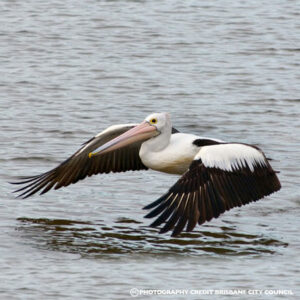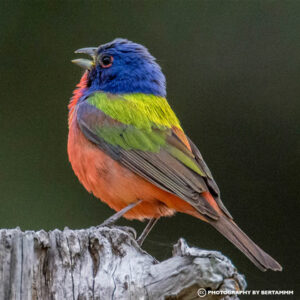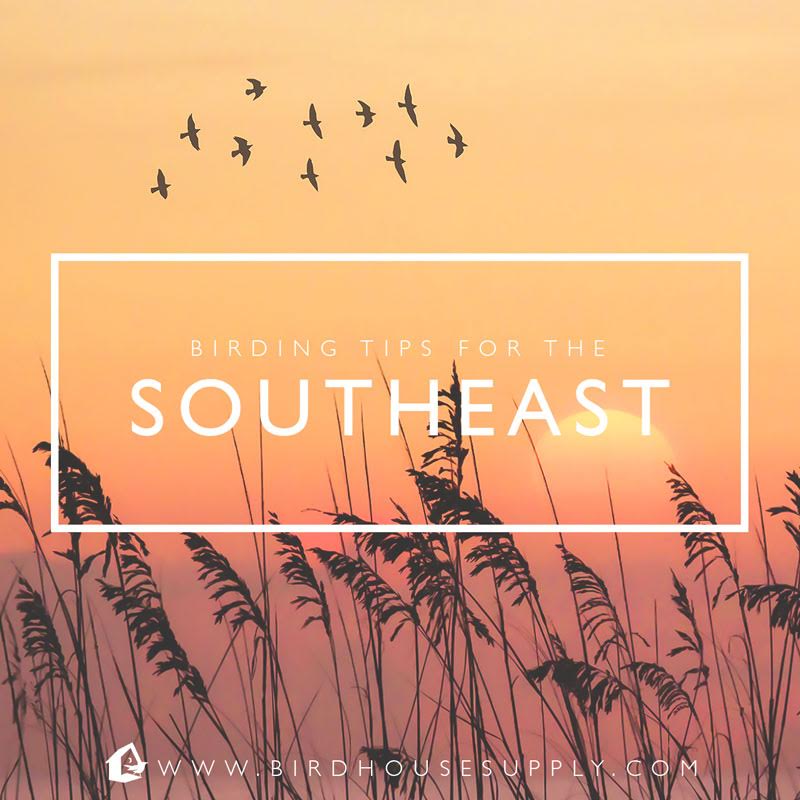Follow BirdhouseSupply.com as we feather out a new series! Keep an eye out for your region and learn about what birders are watching for in the Southeast, Gulf Coast/Southwest, West, Northwest, Central and Northeastern zones of the US.
Mountains, sun and alabaster beaches draw international visitors to the American South. This great migration happens long before spring break. If you want to enjoy the wildlife – the south is the perfect destination. Of course, I mean the genuine wildlife. The coastal stretch from Virginia to the Gulf embraces a vast array of avian species – from wading birds to soaring birds-of-prey; your birdwatching days are guaranteed to be long and eventful. Whether you venture into the bottom of the Chesapeake or trek Padre Island, you are sure to encounter a southern adventure.
Be a Bird Buddy! Spread the word about habitat conservation. Act locally. Set out feeding stations, and select the best birdhouses for your visitors, maintain a diverse habitat and encourage others to do so. Being a birder means acting as an ornithologist, an ecologist and a publicist.
The South
While most people think of the fall migration season, birding is a year round treat for Southerners. This area can be divided into two sections – the coastal zones (tidal wetlands), and the interior (including flat farmlands and mountain regions). Ecologically, the South offers tremendous diversity. Visually meander over a map of this region and you will notice that it encompasses four USDA growing zones (7-10) that illustrate weather expectations from the temperate (including hard frosts and snows) to the tropical. This vast offering dictates which bird species will visit areas and which will move to sweeter climes.
Temperatures aren’t the only factors that shape birds’ itineraries. As mentioned, geographical features play a significant role. Some birds are drawn to the rich feeding grounds of marshes that stretch out from Virginian coasts, South Carolina’s Low Country and into the spectacular resources of Florida (Key West Islands, Gulf Shores).
Feeding grounds do not mean “seafood” to all feathered diners. The Smoky Mountains offer a delight of sylvan treats and the pickings of harvested Georgia farmlands are on many birdy minds as they hum the Carmichael and Gorrell song. Nothing on this menu? Turn your beaks to the Everglades.
The South offers such a mind tossing variety of possibilities that you may need to pace yourself. Watching the languid flight of a flock of Turkey Vultures searching those long southern highways can be quickly enhanced by the sharp “twit” of a family of Cardinals. The American South really is an ornithological Mecca. We will break it down into sections based on bird “habitat” and families: Shore and Wading Birds and Field and Songbirds.
Note: People invent “types and categories,” but animals have not read some of the texts. Birds can and do cross habitats so keep your eyes peeled for some surprises.
Wading Birds and Shore Birds:
 These are the darlings of the south. It’s hard to think of a steamy Savannah summer or Floridian wetland without imagining those iconic Great Egrets. You will find them ornamenting a mangrove or hitchhiking on a steer as he grazes a lonesome pampas field. Other herons abound as well and the South’s wetlands offer even more birding adventures.
These are the darlings of the south. It’s hard to think of a steamy Savannah summer or Floridian wetland without imagining those iconic Great Egrets. You will find them ornamenting a mangrove or hitchhiking on a steer as he grazes a lonesome pampas field. Other herons abound as well and the South’s wetlands offer even more birding adventures.
Moorhens and coots: These birds are viewed in marshes, lakes ponds and other wetlands that sport reeds or rush growths. While they pair off to nest, Coots will gather in flocks after the mating season.
Grebes: These water birds resemble the familiar Loon of the northeast. Their silhouette is distinguished, as like the loon, they seem to be high-headed in the water with most of their bodies nearly submerged. Adult Pied-bills have a band across their bill during the nesting season. These diving birds will disappear beneath the surface when threatened. They dive to feed on fish and invertebrates and, like cormorants, can maneuver quite well under water. Grebes rarely take flight. Nests are set into the islands and reeds of marshes, coastal lagoons and larger wetland areas. Keep an eye out in the fall and winter for Grebes that arrive from northern nesting grounds.
Wood Ducks and Mottled Ducks: These delightful waterfowl are regular visitors to wetlands and lakes. The Mottled Duck rarely leaves its Florida home and will be seen dabbling in brackish waters or floodplains. The iridescent Wood Duck nests in trees offering that renowned and dramatic duckling “launch” of their fluffy hatchlings! The southern population of Wood Ducks increases with northern arrivals – some coming down from Canada. The South hosts many varieties of waterfowl, including Scaup, Teal, Pintail, Widgeon and Merganser.
Sandpipers and Sanderlings: These little birds scamper and dash at the shoreline feeding on marine invertebrates and insects. Sandpipers are endemic to shorelines and the sanderlings are also migratory. Willets are members of the sandpiper family. These large (some are over a foot) shorebirds gather in flocks to scour tidal areas for their meals. Keep watch for another shorebird – the Ruddy Turnstone (named for its foraging method of toppling objects to find insects and crustaceans underneath) winters in the South. They are stocky shorebirds with a distinctive “W” shaped black bib atop their breast.
Pelicans: These unmistakable symbols of shoreline regions adorn beaches and boat docks along the entire Southern coast. Brown Pelicans are true coastal birds but the striking White Pelicans are to be found in freshwater – in inland waterways. Both of these birds rank amongst the largest in the world …some with 9-foot wingspans (8-8.2 pounds). The Brown Pelican feeds by diving from the air to collect seafood into its expansive bill pouch. Both birds have a unique prehistoric silhouette when in flight. Known to be long-lived (roughly 30 years), they breed in colonies on secluded islands. Since Pelicans build large ground nests of sticks and grasses they gather in areas inaccessible to predators.
Keep an eye out for
- Black Rail: This bird has sooty plumage with mahogany back feathers mottled in white polka dots. Reclusive and tucked into reed beds these dainty Rails are identified by their spring night songs and are most active in the dawn and twilight. Don’t forget – Yellow Rails. These tiny and reclusive quail-like Rails are a rare treat – if you can find them overwintering in Florida farmlands, ponds or brackish marshes.
- Black Skimmer Tern (Skimmers): The only species with an elongated lower bill. Best viewed in the south of Florida (their wintering grounds). These terns “skim” the marsh or sea surface snagging crustaceans or fish. Favorite nesting grounds are along Florida’s central Gulf Coast.
If you are in the Keys watch for the occasional visit of the Caribbean Bridled Tern and nesting Brown Noddies!
- Frigate Birds: These gorgeous large seabirds nest in the keys (especially Dry Tortugas – a seabird hotspot). Hurricanes can bring them to new areas, so watch for these along any shores of Florida’s Panhandle. Other pelagic species visit the shore to breed and during severe weather periods.
Watch for – Petrels, Boobies, Shearwaters, Jaeger and Albatross. Boating trips to watch (boats are not just for whale watching!) pelagic birds are geared to sourcing the best sea zones for viewing. “Surf” the web to see which bird boats set sail near you.
- Roseate Spoonbill: Native to Florida’s coastal wetlands these glamorous pink birds sport a distinctive and sensitive “spoon” bill that they use to sift out fish, crustaceans and insects. They will venture into the north of Florida but the best spoonbill sightings are in the Tampa Bay region.
Anhinga are regular visitors – you can’t miss seeing these great fishermen as they scramble onto a mangrove to dry out their wings.
Other birds that venture near ponds and marshes include the Belted Kingfisher and the Osprey.
Field and Songbirds
The South offers a diverse habitat resource for migratory songbird species as well as the bird species that decide to stick around. Late summer, fall and winter months provide an evolving parade of songbirds that enhance chances for mass viewings. Don’t forget to enjoy the flocks of field or game birds that are emerging to foraging on croplands. Flocks of turkeys filter from the verges and are in easy viewing range as they feed on harvested grains and visit bird-feeding stations!
 Indigo and Painted Buntings: This stunning bird glows and is easily mistaken for a sky blue ribbon or roadside chip of plastic (as with many species, juvenile males and females are earth-toned)! Most common in the summer, the Bunting’s habitat is quite widespread, from coastal backyards to inland fields and woodland margins. Painted Buntings are a color palette for a modern artist (females are a luminous yellow and iridescent green with a slip of mustard yellow at the edge of the ceres), and these whimsical songsters (finch-like warbling) inhabit the same regions as their blue cousins. Painted Buntings are known to overwinter in Florida. The Blue Grosbeak is quite similar, but note the seed-eating “thicker” bill, walnut wings and wing bars. The Blue Grosbeak is thicker set and slightly large than the Indigo Bunting.
Indigo and Painted Buntings: This stunning bird glows and is easily mistaken for a sky blue ribbon or roadside chip of plastic (as with many species, juvenile males and females are earth-toned)! Most common in the summer, the Bunting’s habitat is quite widespread, from coastal backyards to inland fields and woodland margins. Painted Buntings are a color palette for a modern artist (females are a luminous yellow and iridescent green with a slip of mustard yellow at the edge of the ceres), and these whimsical songsters (finch-like warbling) inhabit the same regions as their blue cousins. Painted Buntings are known to overwinter in Florida. The Blue Grosbeak is quite similar, but note the seed-eating “thicker” bill, walnut wings and wing bars. The Blue Grosbeak is thicker set and slightly large than the Indigo Bunting.
Scarlet Tanager: These birds are hard to miss with their brilliant scarlet body (females are a yellow-mossy hue with darker toned wings and tail) set off by black wings and tail. At slightly over 7”, these large woodland and forest-edge dwellers are regular summer visitors. Despite its name, the Western Tanager frequents the Mid-Atlantic and South (as well as New England). Their coloring appears as a cross between an Oriole and a Goldfinch – as the males have an orange head that fades into yellow. Wings are black with peeks of yellow-orange.
Mockingbird: These boisterous and territorial Southern favorites learn complex songs that they aren’t shy about sharing. They have a conspicuous flight pattern, flashing grey and white feathers accented by the Mockingbird’s long tail. The birds often swoop and screech when disturbed and have been known to charge anyone that gets too close during the nesting season. Catbirds (with slate plumage and chestnut down, or “rufous,” under tail) have a similar behavior and silhouette including the complex mimicking and creative song style. Both species – and don’t ignore the Brown Thrasher – are too exuberant and garrulous to miss!
Bobolink: This striking grassland bird sports an amber “hood” and rich black plumage in mating season (males, in the off-season, and females are grades of brown with finch-like markings). Wings are edged in gold and topped by a white wing bar and a pale gray rump. The Bobolink nests in fields and grasses and some farming practices have threatened their populations. As with many songbirds, habitat impact has damaged population recovery. Related to Blackbirds and Orioles, these birds are viewed flitting across hayfields or rice fields (South and Great Lakes) and vocalizing from mature grasslands. The Bobolink (often seen in the same locales as the larger ground bird, the Killdeer) feed on insects and seed heads and migrate to winter grounds in the South.
Whip-poor-will (Nightjar): Their fluffy faces boast feathery cat-like whiskers around the ceres – and large baleful eyes. Often hard to find due to their crepuscular habits and leaf-litter toned plumage, these stout ground birds are “noticed” by their yodeling whistle, which can be heard well into the night. Threatened by habitat loss, the Whip-poor-will lives in woodlands and scrub pine forests. They also frequent populated areas if “islands” of trees remain. The Nightjar family includes the Nighthawks. These lithe birds are best viewed in an open area as Nighthawks are found snatching insects on the wing along with flocks of swallows.
Swainson’s Warbler: This endangered Warbler species gained fame by “posing” for painter John Audubon. This dainty, Wren-shaped Warbler is experiencing a comeback in the South. Ironically, the best place to watch these songsters is in the industrial pine farms – the logging industry is unwittingly planting the Swainson’s favorite habitat!
Watch for the other warblers, including the Yellow, Kentucky, Hooded and the Ovenbird.
More favorites! Keep your binoculars ready for these delightful songbird species.
- Eastern Bluebird and Wood Thrush
- Cedar Waxwing
- Yellow-billed Cuckoo and the Vireos
- Eastern Towhee and Song Sparrow (Chipping, White-throated and English/House Sparrow)
- Finches and Wrens
- Phoebes and Flycatchers
- Woodpeckers (Red-headed, Downy, Pileated), Sapsuckers, Flickers and Nuthatch
Field and Woodland Species (Game Birds)
Northern Bobwhite: These perky and plump New World Quail are secretive. They prefer darting around thickets, bramble and verge shrubs that border natural grasslands as well as farmland. Noted for their “bob WHITE” call. Watch for coveys of these birds winging by in a distinctive low and fast flight pattern.
Remember to watch for the Ruffed Grouse. Male partridge display to hens with flared tails – that resemble classical Japanese fans. Quiet and discreet, the partridge cock sounds a familiar “drumming” during courtship – created by building a momentum of wing flaps. These elegant ground birds are sleeker than Bobwhite and have a silhouette reminiscent of bantam chickens.
Meleagris gallopavo, the Wild Turkey: These are the birds that were supposed to be the symbol of the US (a prize they lost to that bird-of-prey, the Bald Eagle). Majestic and proud, this native galliforme ranges from Canada to Mexico and has experienced a stunning population recovery.
Mourning Dove: A regular visitor to croplands and backyard feeding stations, the Mourning Dove is readily identified by its distinctive silhouette, and by the male’s soft trilling “whooo – whip whooo whooo.” They are permanent residents in all the southern states, often appearing in large flocks.
Hotspots
If you are short on time, or really want to hit the celebrity birding trail, these are the places to go. There are just too many fantastic areas to list – so check out local birding clubs to find a migration area or year-round species site. If you are looking to view certain birds find out where they are most likely to pop up – you may be surprised. Visit Internet birding sites and peruse the one that has the resources you need. eNature.com has a quick regional species list that is very easy to use. Plug in your region and click on each family. Next to each bird pictured is a brief vocal recording! Cornell University offers a comprehensive resource for species including habitat, song, characteristics and behaviors.
Put down the iced tea and gather the binoculars – it’s time to get birdwatching!


